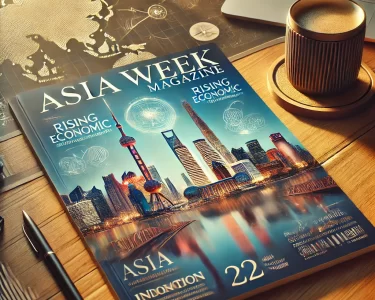Baijiu (pronounced “bye-joe”) is China’s most iconic and widely consumed alcoholic beverage, yet it remains relatively unknown to much of the Western world. This fiery spirit, often exceeding 50% alcohol by volume, has been a cornerstone of Chinese culture for centuries, serving as both a celebratory drink and a symbol of social status. With a complex production process, distinctive flavors, and deep-rooted cultural significance, baijiu is more than just a drink—it is a tradition.
The Origins and History of Baijiu
Baijiu’s history dates back over a thousand years, with its origins tracing to the Tang (618–907 AD) and Song (960–1279 AD) dynasties. However, it was during the Ming (1368–1644 AD) and Qing (1644–1912 AD) dynasties that baijiu-making techniques evolved significantly, giving rise to the variety of styles seen today. Ancient distillation techniques, influenced by Chinese alchemy and agricultural advancements, led to the refined and powerful spirit that is now synonymous with Chinese hospitality and celebration.
Traditionally consumed at banquets, business meetings, and family gatherings, baijiu plays a crucial role in social bonding. Drinking baijiu is not merely about enjoying alcohol; it is about participating in a ritual of respect, toasting, and camaraderie. In many ways, understanding baijiu is essential to understanding Chinese culture itself.
Also Read:- What Is Dim Sum? The Beginner’s Guide to South China’s Traditional Brunch Meal
How Is Baijiu Made?
Baijiu production is an intricate process that requires skill, patience, and time. Unlike Western spirits such as whiskey or vodka, which are typically distilled from grains like barley or potatoes, baijiu is made using sorghum, although other grains like rice, wheat, and corn are sometimes used.
1. Fermentation
Baijiu’s fermentation process is unique because it uses a solid-state fermentation method. Grains are mixed with a fermentation starter called qu (a mix of mold, yeast, and bacteria) and left to ferment in earthen pits or stone jars. This fermentation process can last from months to years, allowing for complex flavor development.
2. Distillation
After fermentation, the mixture is distilled using traditional Chinese methods. Unlike Western distillation, which often involves liquid-state distillation, baijiu’s solid-state distillation technique contributes to its unique character and high alcohol content.
3. Aging and Blending
Baijiu is then aged in clay or ceramic vessels to enhance its flavors. During this aging process, master blenders carefully mix different batches to achieve a consistent and refined taste. Some premium baijius are aged for over a decade, similar to fine whiskey or cognac.
The Different Types of Baijiu
Baijiu is not a one-size-fits-all spirit; it comes in various styles and flavor profiles, classified primarily by their aroma. The four main categories are:
1. Strong Aroma Baijiu (Nongxiangxing)
- The most popular type, especially in Sichuan province.
- Rich, bold, and full-bodied with fruity and floral notes.
- Famous brands: Luzhou Laojiao, Wuliangye.
2. Light Aroma Baijiu (Qingxiangxing)
- Milder and more delicate, with a smooth and clean taste.
- Originates from northern China, particularly Shanxi province.
- Famous brand: Fenjiu.
3. Sauce Aroma Baijiu (Jiangxiangxing)
- Characterized by deep umami, soy sauce-like flavors.
- The most revered and complex, often compared to whiskey.
- Famous brand: Moutai.
4. Rice Aroma Baijiu (Mixiangxing)
- Light and fragrant, made primarily from rice.
- Popular in southern China, including Guangdong and Guangxi provinces.
- Famous brand: Guilin Sanhua.
How to Drink Baijiu
Baijiu is traditionally consumed in small ceramic cups, and it is customary to toast (ganbei) before drinking. Unlike Western spirits, which are often sipped slowly, baijiu is typically consumed in a single gulp as a gesture of respect and camaraderie.
Baijiu Drinking Etiquette
- Always toast before drinking – In Chinese culture, toasting is a sign of respect, especially to elders and higher-ranking individuals.
- Hold your cup properly – When toasting someone of higher status, hold your cup slightly lower than theirs as a sign of humility.
- Drink in rounds – Baijiu is a social drink, so it is often consumed in multiple toasts throughout a meal.
- Ganbei! – This phrase, meaning “dry cup,” signifies that you should finish your drink in one go.
The Growing Global Popularity of Baijiu
While baijiu remains the most consumed spirit in the world due to its popularity in China, it has only recently started gaining recognition internationally. Luxury brands like Moutai and Wuliangye have been making their way into high-end liquor stores and cocktail bars in major cities like New York, London, and Tokyo.
Baijiu is also finding its place in mixology, with bartenders experimenting with its unique flavors in modern cocktails. The rise of China’s global influence has also contributed to the increasing curiosity surrounding baijiu, making it a sought-after spirit among collectors and connoisseurs.
Final Thoughts
Baijiu is more than just a beverage; it is a cultural phenomenon deeply embedded in Chinese tradition and social customs. While its high alcohol content and bold flavors may be intimidating to first-time drinkers, appreciating baijiu is an experience that opens doors to a rich world of history, craftsmanship, and connection.
Whether you are a seasoned spirits enthusiast or a curious newcomer, exploring baijiu offers a taste of China’s heritage in every sip. Next time you have the opportunity, raise a glass and say “Ganbei!”—because with baijiu, every drink is a celebration.




